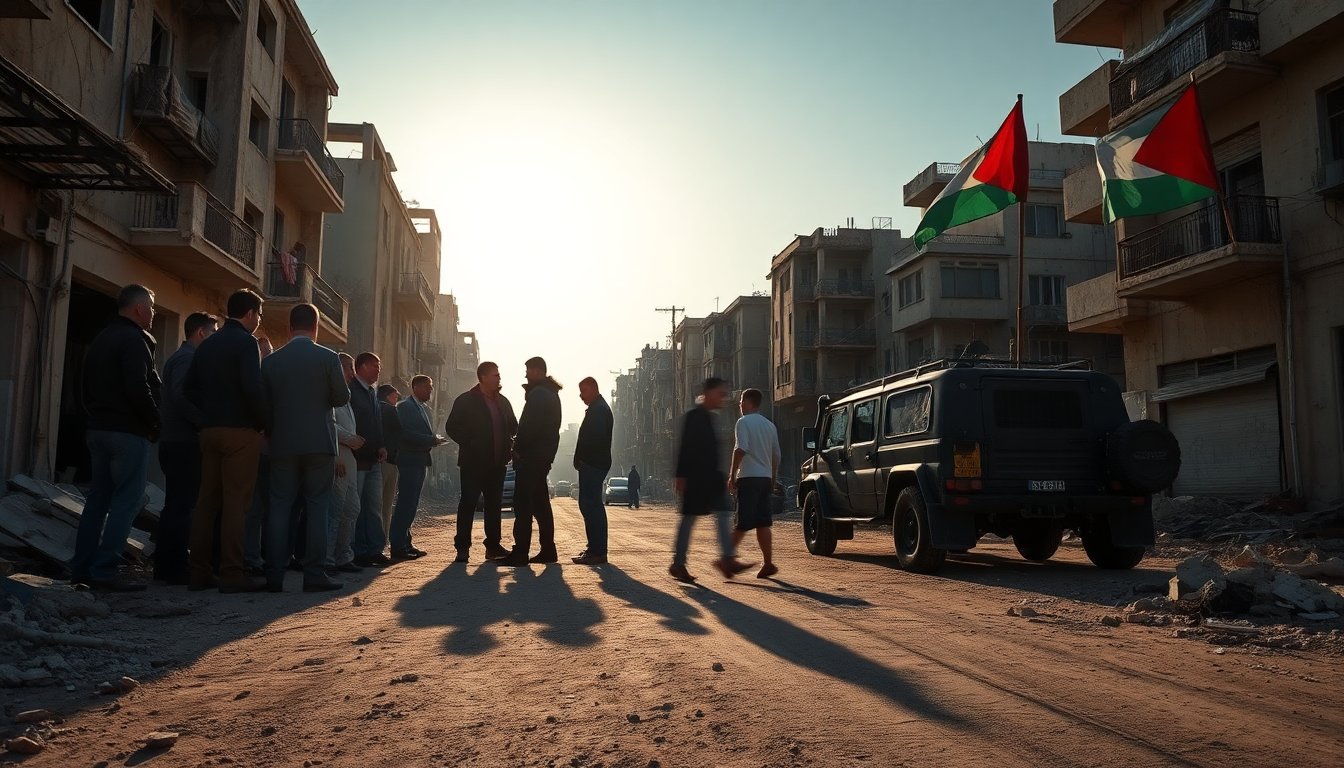Table of Contents
In the wake of President Donald Trump’s declaration of a historic dawn of a new Middle East, the ceasefire between Israel and Hamas has quickly shown its fragility. Both parties are trading accusations of breaches, while the international community scrambles to salvage the agreement.
The initial phase of the peace plan aimed to halt hostilities, facilitate humanitarian aid, and negotiate the release of Israeli hostages in exchange for Palestinian prisoners. However, escalating tensions have created significant hurdles for the plan’s implementation.
Fractured peace efforts
As disagreements arose regarding all major aspects of the ceasefire agreement, violent skirmishes erupted in Gaza. Hamas sought to consolidate its control, resorting to public executions of those accused of collaborating with Israeli forces. Gershon Baskin, an experienced negotiator, expressed concern during an interview with BBC News, stating, “We are in a deep crisis mode. There’s a lot of work to do, and this agreement must not collapse, especially not so soon.”
Hostage situation complicates negotiations
The return of hostages has become a contentious issue. After Hamas returned only four of the 28 deceased hostages, Israel responded by restricting aid and closing the Rafah crossing between Egypt and Gaza. Following Hamas’s return of four additional bodies, the Israeli government maintained its stance on reducing aid, citing violations of the agreement.
Ela Haimi, who lost her husband during the Hamas-led attack on October 7, expressed her anguish regarding the return of her husband’s remains. “I hope that my government will work with the international community to pressure Hamas effectively,” she stated during a Zoom call with journalists. Her desire for the process to stall until all bodies are returned reflects the deep personal stakes involved in these negotiations.
Complications in the peace process
President Trump announced that the second phase of the peace effort is underway, despite the ongoing turmoil. This stage calls for Israel to withdraw additional forces from Gaza while requiring Hamas to relinquish its weaponry. Observers note that achieving these objectives will prove challenging as Hamas continues to assert its dominance in areas from which Israel has retreated.
Rising tensions and violence
Masked armed men have been spotted patrolling the streets of Gaza, with reports of Hamas fighters executing individuals accused of collaborating with Israel. Clashes between Hamas and local gangs have also contributed to the already volatile environment. Under the ceasefire terms, a temporary international stabilization force is expected to be deployed to Gaza, although specifics regarding troop contributions remain uncertain.
Nimrod Novik, a fellow at the Israel Policy Forum, emphasized the need for a well-organized plan to prevent misunderstandings that could escalate tensions. He remarked, “A minor provocation from Hamas could trigger an excessive Israeli response, leading to a rapid deterioration of the situation.” Recent reports of Palestinian casualties due to Israeli fire heighten these concerns, with the Gaza Health Ministry documenting seven fatalities.
International involvement and future governance
The humanitarian toll has been staggering, with over 67,000 lives lost in Gaza since the onset of hostilities. The destruction of infrastructure, including schools and hospitals, poses a daunting challenge for future rebuilding efforts. To address this, the United Nations Development Programme announced that a coalition of European, Arab, American, and Canadian nations has pledged $70 billion for the reconstruction of Gaza.
Despite this commitment, questions about governance loom large. Trump’s initial proposal involved creating a “board of peace” to oversee local governance, with speculation about the involvement of figures like former U.K. Prime Minister Tony Blair. However, the vagueness of this arrangement has led to skepticism. Hiba Husseini, a lawyer from Ramallah, criticized the plan, stating, “This seems like a form of colonization, disregarding the desires of the Palestinian people.” She raised concerns about the exclusion of major Palestinian representatives from the negotiation process, underscoring the difficulties that lie ahead.
The initial phase of the peace plan aimed to halt hostilities, facilitate humanitarian aid, and negotiate the release of Israeli hostages in exchange for Palestinian prisoners. However, escalating tensions have created significant hurdles for the plan’s implementation.0


